How To Get Rid Of Fleas From Cats With The Natural Ways
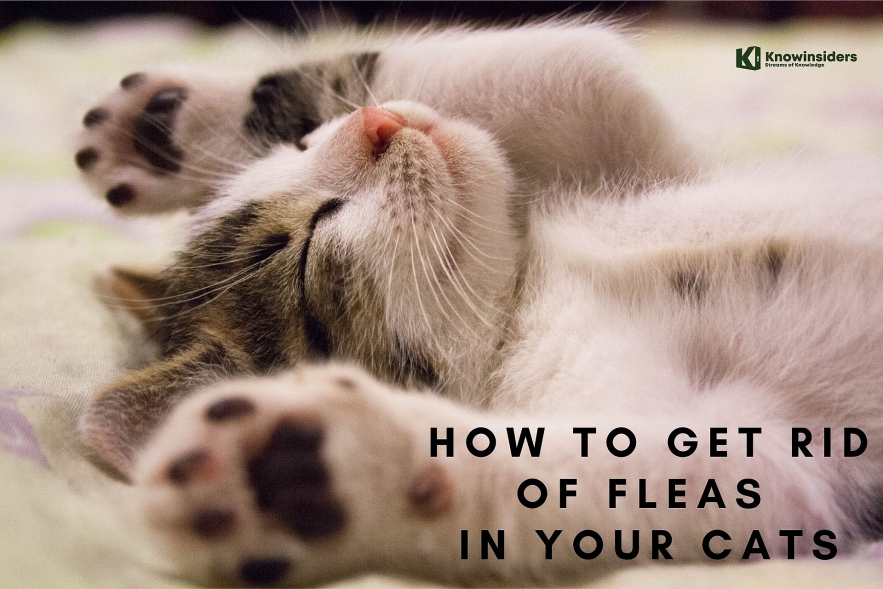 |
| How To Get Rid Of Fleas From Your Cats. Photo KnowInsiders |
| Table of Content |
Your cats may experience a variety of health issues due to fleas. Make sure to practice some flea prevention techniques yourself, and safeguard your cat by keeping outside pets away from it. If you do discover fleas, don't worry; you and your cat have lots of options for getting back to living without them.
What are fleas?
Fleas are minuscule, wingless insects that inhabit the body of your cat. They feed on blood and lay their eggs in your cat's fur, which they then disperse throughout your home. The entire life cycle of a flea, from egg to larva to pupa to adult, can occur in a matter of weeks. A single flea has the capacity to lay up to 2,000 eggs in its lifetime. Fleas bite people, especially on the ankles and lower legs, even though they don't live on people. They will also jump onto and infest other pets in the home.
How to tell if your cat has fleas
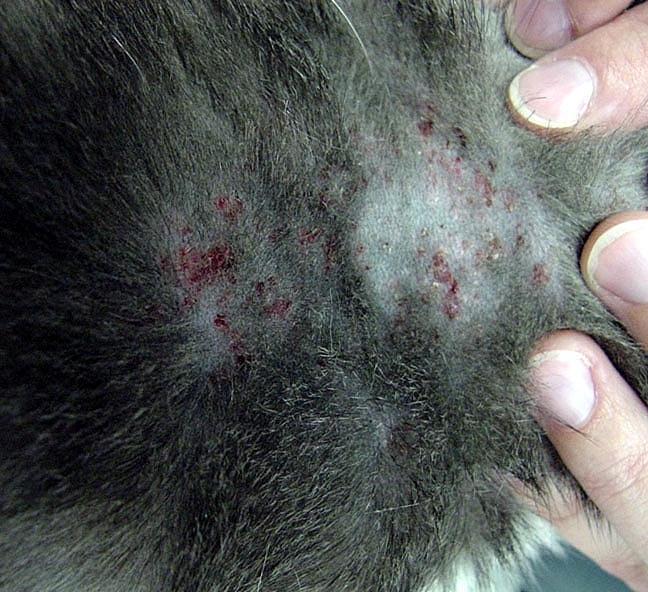 |
| Photo lawnstarter |
There are a number of common indications that a cat may have a flea infestation, but you will need to conduct some additional research to be certain. Fleas are very small, measuring only 1/12 to 1/16" long, so they are difficult to see when there are only a few present. Aside from that, their reddish-brown hue might merge with your cat's fur. Instead of concentrating on finding fleas visually, watch out for these additional typical indications that your cat has fleas:
Despite the fact that fleas can multiply quickly, it doesn't take many of them to make your cat scratch excessively and develop itchy skin. Your cat may be allergic to flea saliva, which turns it into an irritant that causes sensitivity, itchiness, scratching, and even small scabbed bumps on their skin. This is in addition to the flea's general movement across your pet's skin.
Excessive biting on fur and legs: Your cat may turn to excessive biting or gnawing on its fur, legs, or feet in an effort to find some relief from discomfort in addition to scratching.
Patchy hair loss, particularly close to the neck or tail: Even one flea's saliva can trigger an allergic reaction that results in hair loss, not to mention any fur your cat may have bitten off or scratched off.
An individual flea can bite its host hundreds of times per day, sucking blood with each bite. This blood loss can cause anemia in severe cases where your pet is being bitten by numerous fleas. Lethargy is a typical sign of this.
Visual cues: As the fleas grow in number, you might start to see them. Look for light-colored specks in your pet's coat or on their bedding (these are flea eggs), as well as black, pepper-like stains (flea feces), in their coats or on their bedding. Additionally, you could see the darker insects scurrying about in your pet's fur.
READ MORE: How to House Train your Cats Effectively?
Why flea bites can be dangerous for cats
 |
| Photo mypetandi |
Flea bites are painful and itchy for your cat, and they can cause a range of problems, including:
Flea allergy dermatitis (FAD)
FAD is an allergy to flea saliva that can set off a severe reaction and intense itching from just a few flea bites. If your cat has FAD, their skin may look sore and crusty. They can also lose fur from over-grooming, bringing a higher risk of skin infection.
Anemia
Kittens and elderly cats can become anemic from blood loss if they have a heavy flea infestation and are bitten too many times.
Tapeworm
If your cat swallows fleas infected with tapeworm eggs while grooming, your cat can end up with a tapeworm infection.
Spreading diseases
The bacteria Bartonella, which can lead to the potentially crippling condition known as "bartonellosis" or "cat scratch disease" in humans, the rickettsial virus, and, less frequently, the serious condition known as typhus can all be spread by cat fleas.
7 steps to get rid of fleas from your cats
1.Start with the right flea treatment for your cat
Treating your cat is always the first step in beating a flea infestation. And if you use an effective preventative product regularly, you’re unlikely to have a problem in the first place.
There are lots of different flea treatments available. Read on to find out which ones may be best suited to your furry friend and remember, you can always ask your vet for their recommendations.
| Flea spot-ons Spot-on flea treatments can be a simple and efficient way to get rid of fleas on your cat and prevent them from getting them in the first place. Spot-on flea treatments can function differently. Advantage for cats is a monthly spot-on that owners can easily apply to the skin at the base of the skull on the cat's back neck. The active ingredient is then gradually released throughout your cat's skin, providing up to 28 days of protection from nose to tail. Fleas are killed by Advantage through contact, not by biting your pet. 2 This aids in preventing cats from becoming irritated by flea bites and can help cats who have flea allergy dermatitis (FAD), a skin allergy brought on by flea saliva. Ask your veterinarian to examine your cat if they have patchy fur, sore skin, or otherwise seem unwell because fleas can cause serious skin diseases in cats. Keep in mind that a consistent, routine flea control program is the only way to completely protect your cat from fleas. Making a note of the day you administered the first dose can be useful for planning your retreat. Use Advantage for cats at least once every four weeks. You can buy the appropriate product for your cat's age and weight without a prescription from pet stores across the country as well as from a variety of online pet stores. |
2.Clean your pet’s bedding
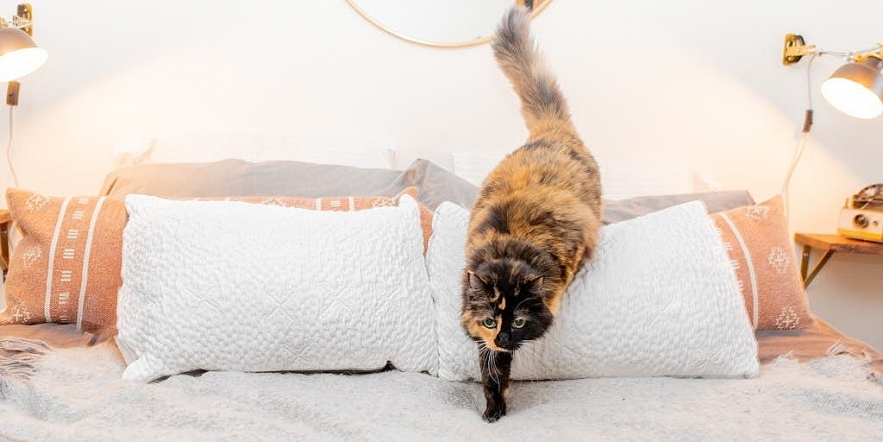 |
| Photo NY Times |
While you can vacuum your pet's bedding, it is preferable to wash it at the highest temperature the material will withstand to get rid of any fleas or flea eggs that may be present. It will also help to tumble-dry the fabric at the highest temperature that it can handle.
| If you can, keep your cat inside. Naturally, you want your cat to be able to play outside with you or enjoy their natural instincts, but fleas are outside all the time and are just waiting to jump on your cat's fur. Maintain the yard in good condition. Fleas are found in moist brush and grassy lawns. Try to prevent fleas from choosing your yard because they dislike the sun. By doing this, your cat won't be as likely to pick up fleas while you're skulking around the backyard. |
3. Wash everything else
All beds should be stripped, the cushions' covers removed, and they should be washed and dried in a hot environment. The same holds true for any clothing and other laundry that may have come into contact with your flea infestation (you usually start to really detest fleas when you have to nuke your favorite sweater!).
4. Vacuum, vacuum again and then vacuum a bit more
 |
| Photo Getty |
You must vacuum all carpets and soft furnishings, such as sofas, every other day for at least three weeks if you want to get rid of cat fleas in the house. Bad infestations might require more time. Pay close attention to the cracks in skirting boards, room corners, and under beds because these are places where the eggs and larvae like to hide. The black specks of flea feces known as "flea dirt" may also be present here, serving as a food source for young fleas.
5.Spray or fog your home
Use an anti-flea household spray in every room after your initial vacuuming to get rid of any adult fleas and larvae the vacuum might have missed. It's important to treat every room in the house, the car, the area under the bed, and the sofa with this solution.
Follow the dosage and frequency recommendations on the packaging, and make sure to keep your family, pets, and other household members out of the area while the product is in use.
To capture any eggs that haven't yet hatched, you might need to perform a top-up treatment.
It is possible to treat a large area of the house at once with foggers and flea bombs, but it's important to be aware that you might also need to use a spray to reach places the fogger couldn't, like under furniture.
Find out which other flea hotspots there are in your house that you should be aware of.
6.Use natural ingrdients
Spices
 |
| Photo catoverdose |
Adding natural ingredients you might find in your kitchen to a cat's diet is one of the simplest things you can do for one that has fleas. Oregano oil can be very effective at getting rid of fleas because it contains a substance called carvacrol. To start, mix one teaspoon of oregano oil with three teaspoons of olive oil, then use the mixture sparingly on your cat's ears, stomach, tail, and neck. Rosemary repels fleas, so try powdering the leaves and sprinkling it in the areas of your home where your cat frequently congregates.
Try adding a tiny bit (less than a teaspoon) of cumin to your cat's food if he or she won't let you apply topical treatments to their fur. Fleas won't want to eat your cat's skin because of the spice.
A small amount of table salt will also work since it aids in the dehydration and killing of the fleas on your cat if you don't have any of these spices on hand. Even better, you can sprinkle it on your carpet to kill any fleas and flea eggs that may be hiding there, or you can mix it with water to treat hard surfaces.
Apple Cider Vinegar
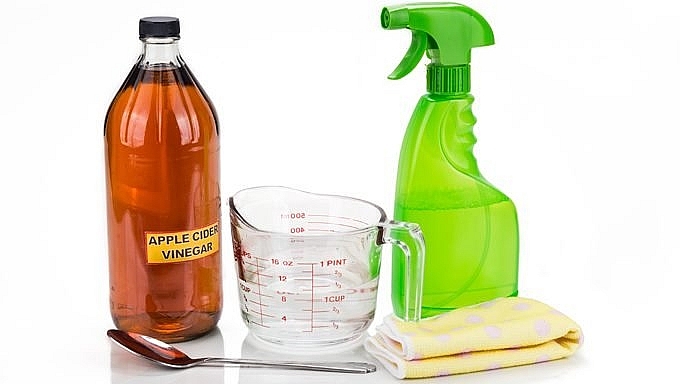 |
| Photo dogtime |
Apple cider vinegar is another grocery store item that fleas don't particularly like. Apple cider vinegar can make fleas jump off your cat's body so you can better combat the problem even though it is ineffective at killing the insects. This makes it a great first step in your personal battle against fleas. Spraying your cat's coat with a 2:1 mixture of apple cider vinegar and water may help. You might need to use a few DIY treatments, including applying vinegar to your cat's fur, to completely rid your home of fleas because they can be a finicky bunch.
Additionally, you should wash all bedding in hot water and vacuum all floors and upholstery. You should also think about removing pet food bowls, bird feeders, trash cans, and any other sources of food from your yard to prevent attracting wildlife that could reinfect your pet.
Lavender and Chamomile
Lavender is a potent, quick-acting flea repellent and a gentle way to calm your pet's skin. It may even induce a brief cat nap. In fact, some studies found that flea-killing formulas with diluted lavender were just as effective as commercial chemical sprays. Use fresh lavender in your home by letting it steep in water for an entire night before straining it out and misting it onto your cat's coat without rinsing.
Loose chamomile tea, another substance with a reputation for soothing the skin, can also be used to kill fleas on your cat. Steep the tea, let it cool completely, and then use the liquid to massage your cat's coat. For as long as necessary, you can repeat both treatments every day.
| Flea Medicines If the natural remedies for fleas aren't working, ask your veterinarian for some strong flea medication or visit your neighborhood pet store for over-the-counter flea remedies. As was previously mentioned, some flea medications for dogs can be toxic to cats, so make sure they are safe for cats as well. There are many different flea treatments available for cats, ranging from sprays and collars to oils and pills that can be hid in food. If your cat is elderly or has a history of health problems, especially, make sure to read the label to see if there are any side effects and whether it is safe for your cat to take. Always de-flea your home, whether you choose to treat it with medication or natural remedies. You never know where those pests are hiding or where the eggs have rolled. |
7.Make an Ongoing Plan to Treat and Prevent Fleas on Your Cat
 |
| Photo Pets |
The key to breaking the flea life cycle is constant vigilance along with flea protection and prevention. Don't give up; it might take a few months to get rid of the infestation. The products may still be effective even if you occasionally still spot a flea or two on your cat.
Take the following actions to help stop a flea infestation from returning:
Check for itching and scratching on your cat at least once per week with a flea comb.
Remind yourself to use or administer treatment and prevention products in accordance with the directions on the packaging.
Consider your cat's interactions with other pets, animals, and people to assess the likelihood that it will encounter fleas.
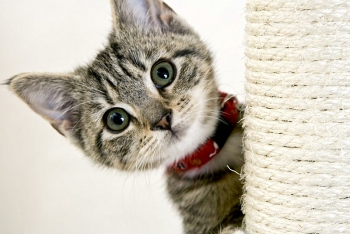 How to House Train your Cats Effectively? How to House Train your Cats Effectively? House training a cat is essential for happy co-habitation, and it's easier than you might think. Cats are clean animals, and they have a strong ... |
 7 useful tips to raising a dog 7 useful tips to raising a dog A dog can be a wonderful addition to any home, but raising a dog is not an easy task. Knowinsider will give you 7 ... |
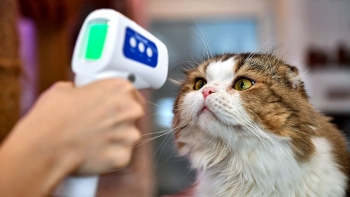 Can dogs and cats get COVID-19? Can dogs and cats get COVID-19? Can my pet and animal get the COVID-19 virus: While coronavirus disease (COVID-19) mostly spreads from person to person, it can also spread from people ... |
























